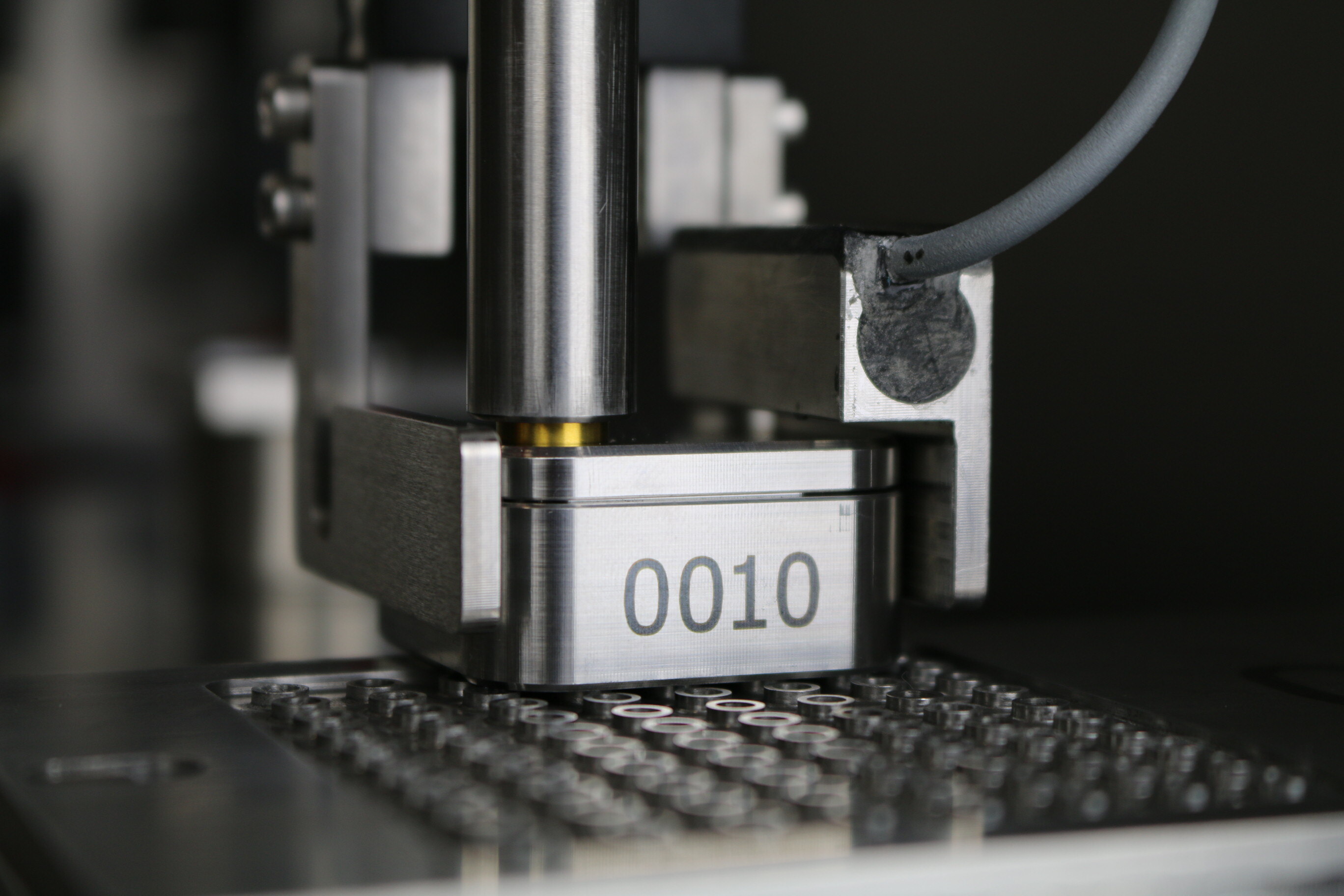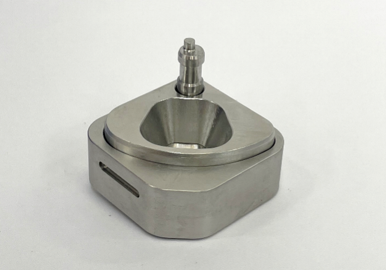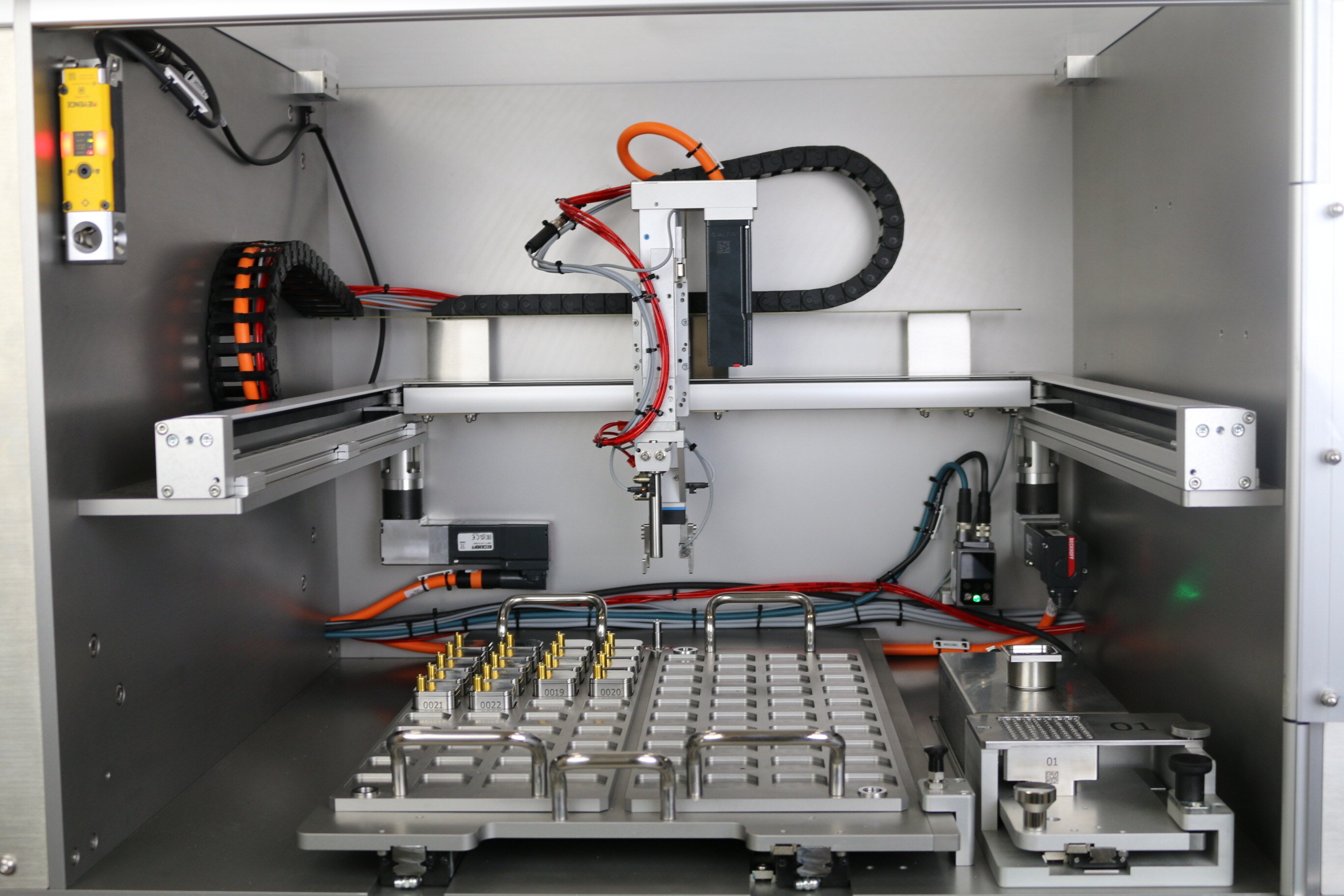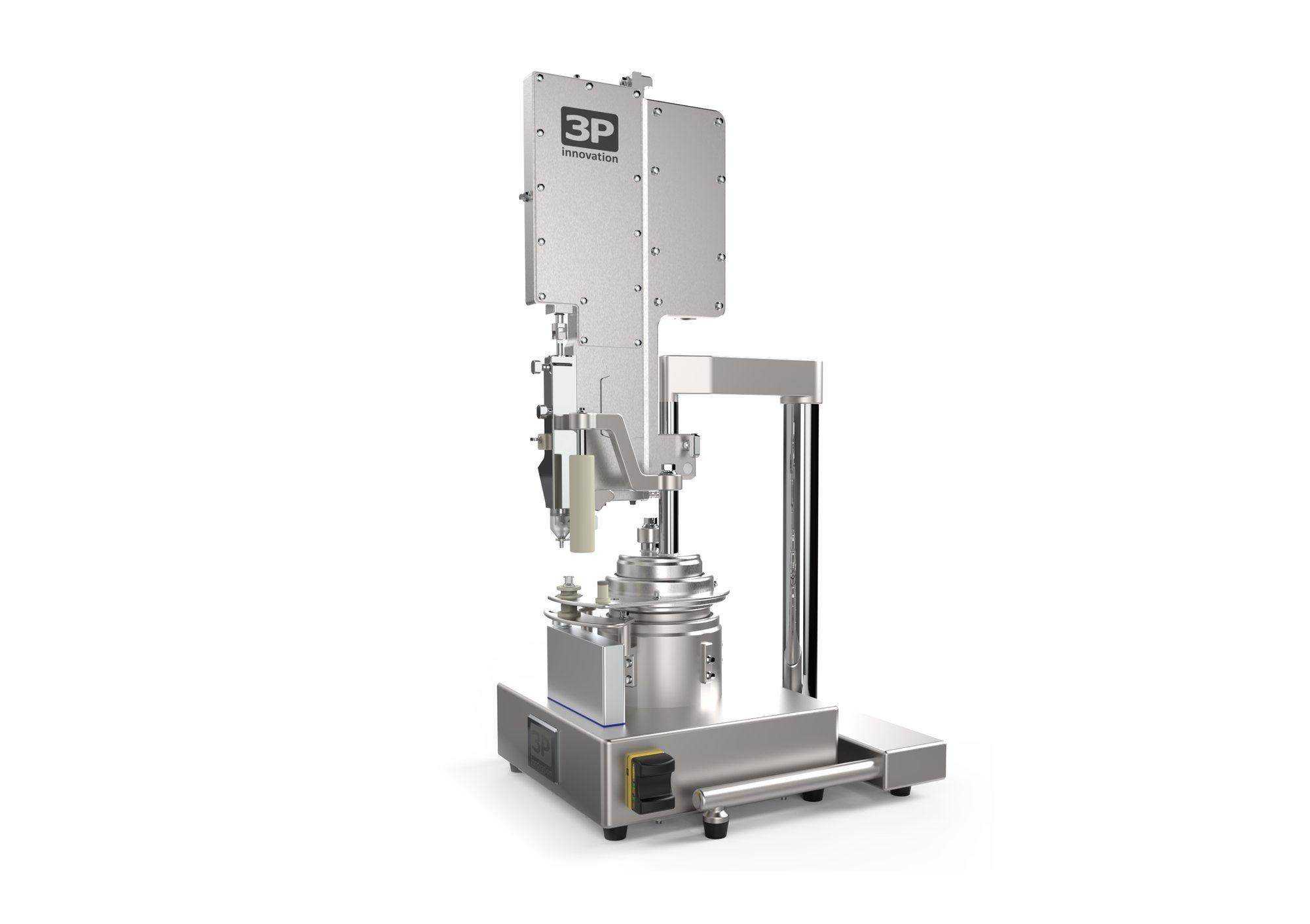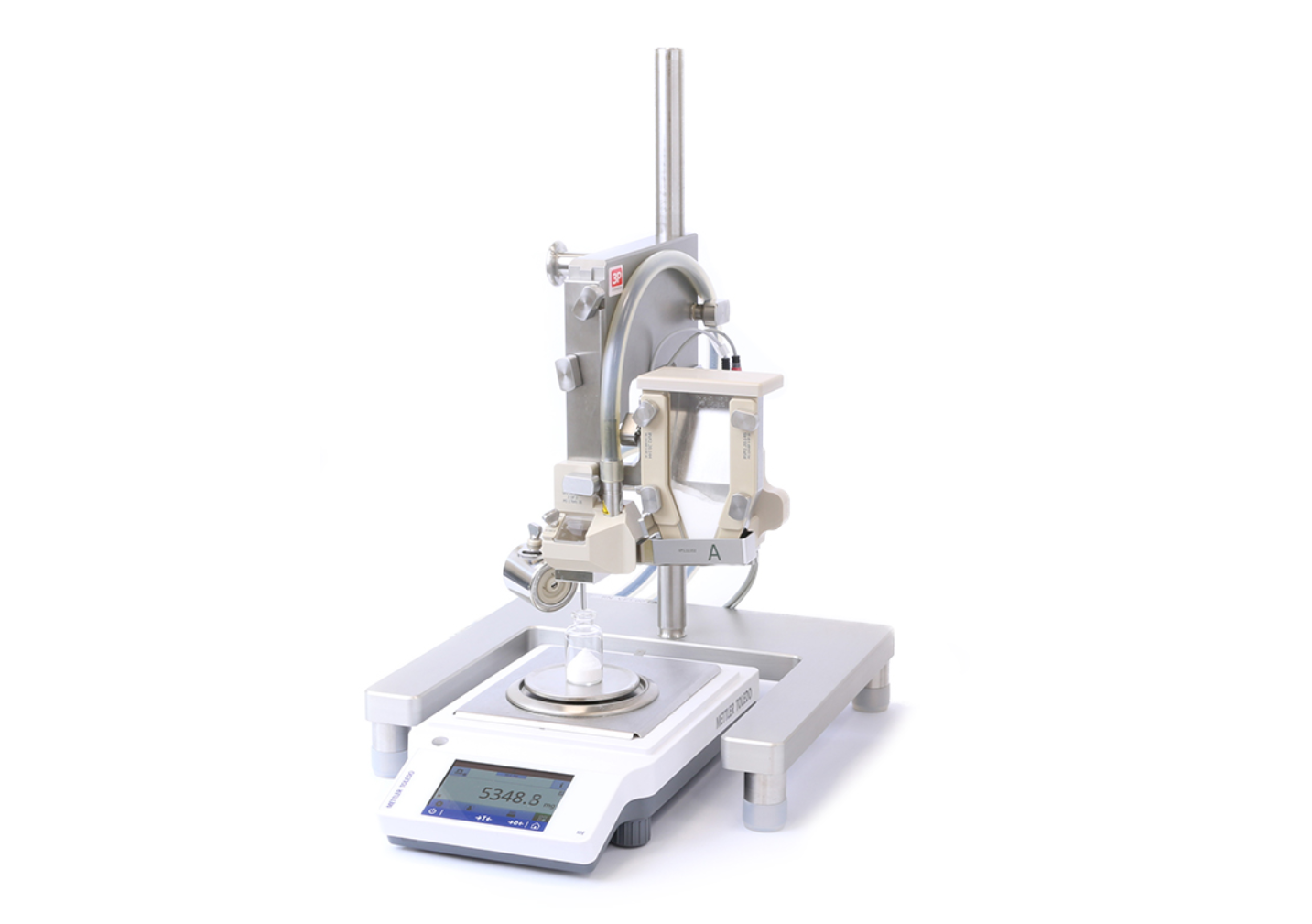Automated powder dosing system for R&D
Our custom automation expertise enables customers to advance product and process innovation across diverse industries. In this project, we partnered with a client in the R&D sector to develop an Automated Powder Dosing System, addressing inefficiencies in sample preparation.
The Challenge
The client needed to fill a wide range of powders into a dense array for analysis; during which they faced significant operational challenges:
- Time-intensive sample preparation: The existing manual process was slow, limiting the number of samples analysed daily.
- Labour-intensive: Skilled workers were tied up in lengthy preparation tasks instead of focusing on higher-value activities.
- Risk of cross-contamination: Manual handling of multiple powders increased risk of contamination, affecting the reliability of results.
Why 3P innovation?
The client selected 3P innovation based on our deep expertise in powder dosing and our longstanding relationship built on trust and successful past collaborations. Our ability to engineer a customised, automated solution set us apart from alternative suppliers:
“Testimonial from client to be included here.”




